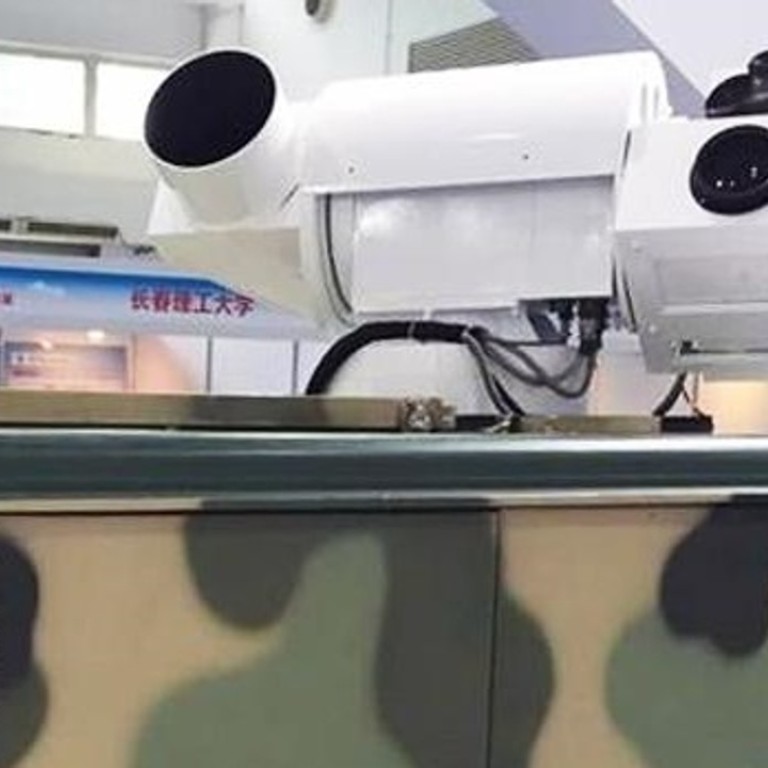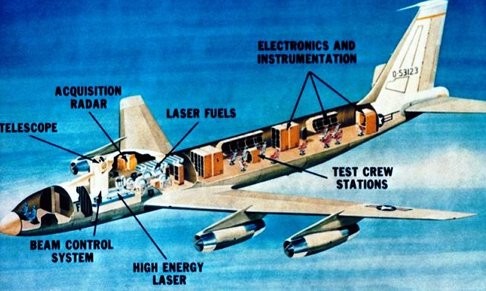
China moves a big step closer to ‘Star Wars’ laser weapons
Mainland scientists claim they have developed the world’s most powerful supercapacitor, which could lead to advanced ‘Star Wars-type’ laser weapons.
Mainland scientists are developing the world’s most powerful supercapacitor that could make Star Wars weapons a reality.
Prototypes of directed-energy weapons such as laser cannons and railguns have been developed in many countries, but few have made it out of their laboratories due to their size and weight.
If the new technology really works and wins a nod from military, a Star Wars weapon may not be very far from us
The Boeing YAL-1 airborne laser test-bed system had to be mounted on a 400-tonne Boeing 747 simply to kill a small drone. The project was cancelled in 2012.
Laser scientists say it is not their fault. After decades of effort, the actual laser weapon has been reduced to the size of a suitcase. But the enormous power supply needed to supply has remained prohibitively large.
The type of storage devices that can provide very large bursts of energy in a short time are called capacitors. Smaller versions are used widely, from starter motors of vehicles to medical implants.
Large, or supercapacitors have been used in lasers and other forms of electrically powered weapons as to store energy and boost power. Traditionally, such capacitors have been heavy and bulky – some are bigger than shipping containers.
Read more:
READ MORE: US military chiefs eagerly describe ‘new dawn’ of laser and microwave weapons
Now, a research team from Peking University and the Chinese Academy of Sciences led by professor Huang Fuqiang has reported a breakthrough in capacitor technology. In a paper published in the latest issue of the journal Science, they describe how the power density of their supercapacitor can reach 26 kilowatts per kilogram, or 130 times that of lithium-ion batteries.
The Yal-1 laser cannon required a power output of one megawatt. A capacitor required to meet that power demand, using conventional technology, would weigh more than 10 tonnes. Huang’s team’s new supercapacitor, in theory, would weigh 40kg.
READ MORE: Lethal laser weapon deployed on USS Ponce in Persian Gulf
“A significant weight loss in the power unit can reduce the overall mass of a laser system. It can extend the application of laser weapon to fighter jets or even spacecraft,” said professor Zhu Heyuan, an expert of laser technology at Fudan University in Shanghai, who was not involved in the research.
“If the new technology really works and wins a nod from military, a Star Wars weapon may not be very far from us.”
A remaining problem for capacitors is their very low energy-storage capacity, which means their high power output might not last long enough to inflict fatal damage on an enemy target.
Huang’s supercapacitor broke the traditional limits of ordinary capacitors with an ability to store 41 watt-hours of electricity per kilogram. Though lower than a lithium battery, it was equivalent to lead-acid cell batteries used in cars today. It was the first time that a capacitor could store as much energy as a mainstream battery.
READ MORE: Smog is China’s top defence against US laser weapons, says PLA Navy admiral
The higher new energy storage capacity opens up new application in other advanced weapons.
Recent years have seen rapid advances in electrically powered weapons for naval and army use. Rail guns, for instance, used electromagnetic force to accelerate projectiles at 10 times the speed of sound to hit long-distance targets, penetrate thick tank armour and intercept incoming missiles.
These new weapons, like the laser cannon, were too big and heavy to be mounted on most aircraft. The world’s most powerful rail gun, which can deliver 32 megajoules of kinetic energy, was tested by the US navy because the warship could bear the weight of its power supply unit.


